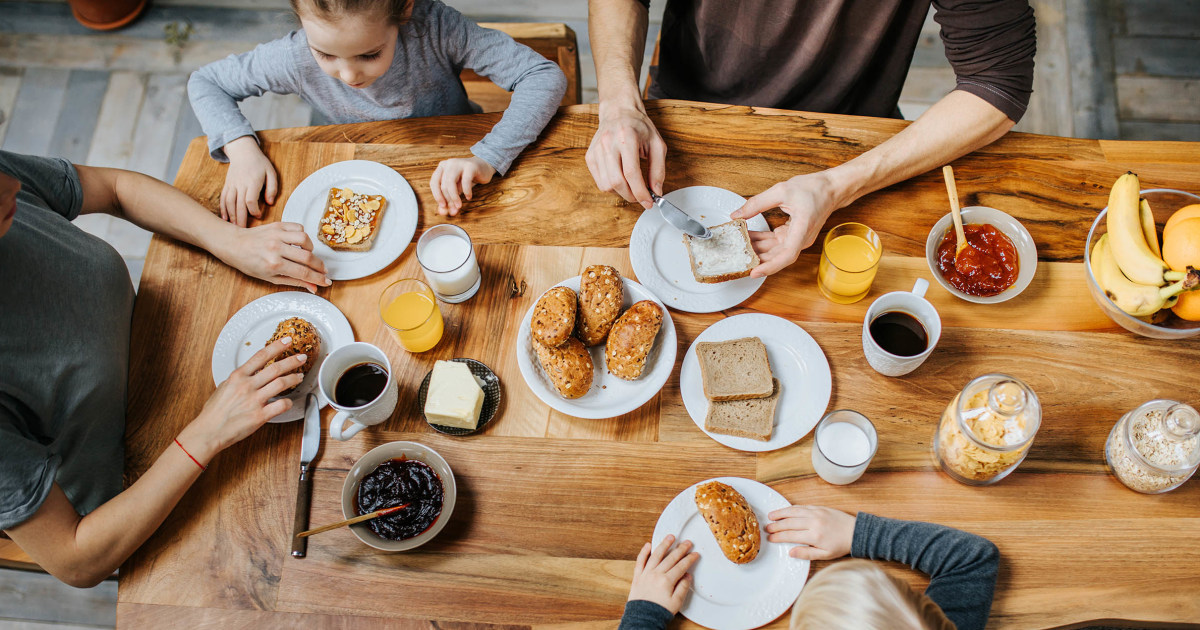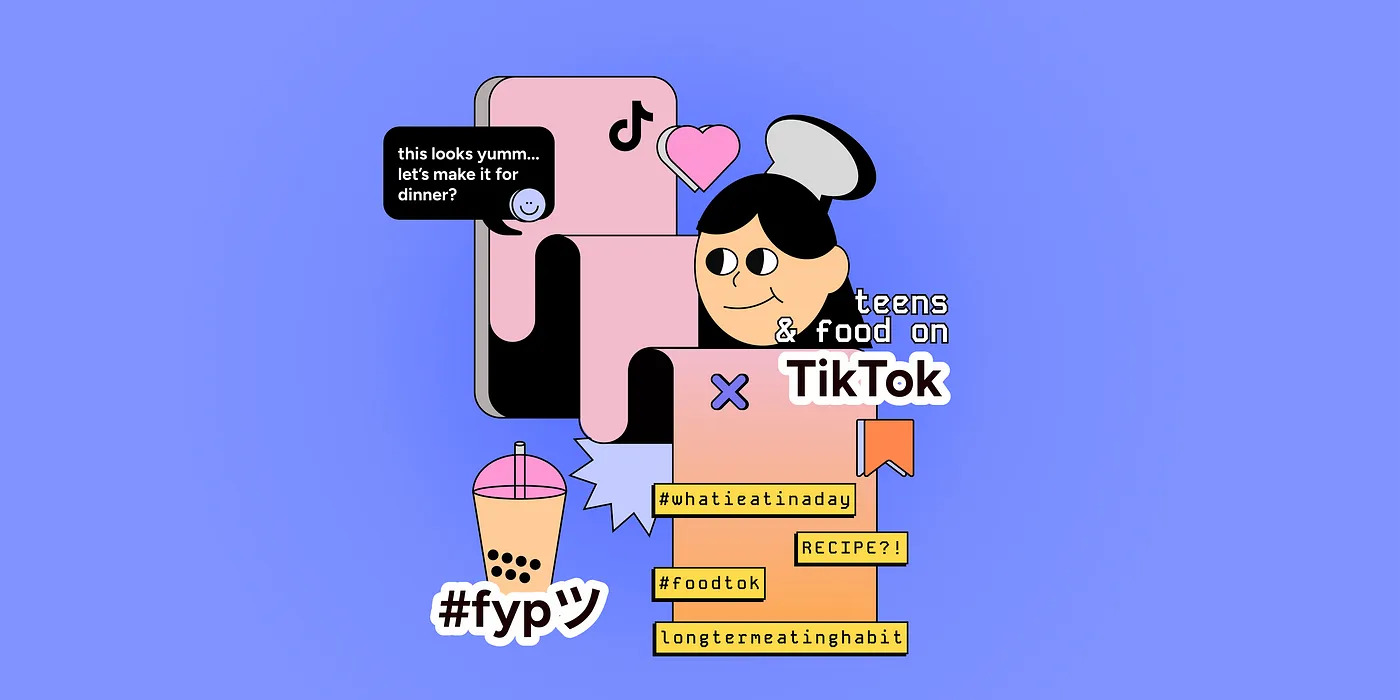Trying to get everyone in your family out the door in the morning can be a gauntlet. And making sure they have a healthy, filling breakfast only adds to the challenge. That’s why pediatricians feed their kids a few protein-packed nutritious breakfasts on repeat.
“Mornings are always a scramble,” Dr. Danielle Grant, a pediatrician at Texas Children’s Pediatrics and mom of three teenagers, tells TODAY.com. “As a parent, you’re always struggling to make sure they’re getting what they need at probably the busiest time in the morning for everybody,” she says.
When her kids were younger, Grant navigated their picky toddler tastes. And now that they’re older, “they wake up and they’re busy, they’re not hungry and they’re trying to rush out the door because they overslept,” she says.
But breakfast doesn’t have to be part of the morning’s obstacle course. Instead, it can be an opportunity to involve kids in picking and making their meals. And breakfast creates a way to start the whole family’s day on the right foot, experts say.
What do pediatricians give their kids for breakfast?
Egg sandwiches
“I really am a firm believer in the egg sandwich,” Dr. Christina Johns, a senior medical adviser for PM Pediatrics, tells TODAY.com.
Her kids, ages 15 and 18, are both athletes who prefer a hot breakfast, so they gravitate towards protein-packed egg and cheese sandwiches most mornings. The sandwiches are a great option, Johns says, because they contain protein, dairy, fiber and carbs — and have the potential to be customized with other nutritious ingredients.
Sometimes her kids will have their sandwiches on “fancy seven-grain panini bread,” she says. Or they might use a flour tortilla or croissant, and the variety helps keep the meal interesting.
Johns also encourages her kids to add other nutritious ingredients to their sandwiches, like avocado or cooked veggies leftover from dinner the night before.
Fruit on-the-go
Fruit is always a health ingredient to add to any meal, and some fruits are more portable than others. For instance, it might not be convenient to sit down with a knife and fork for a slice of watermelon or cantaloupe in the mornings, Johns says.
Instead, she “tries to do things that are easy” and offers her daughter a banana or a ramekin of berries, like blackberries or blueberries, that she can just grab and eat in the carpool on the way to school.
Baked goods with protein add-ons
Sometimes, children’s preferences change quickly. So it helps to have a few standard food options that you can easily adapt to their changing tastes.
That’s how Dr. Katie Lockwood, a pediatrician at Children’s Hospital of Philadelphia, approaches breakfast with her kids. Her go-to foods are typically high in filling protein. “I know (protein) will keep them full longer and help give them energy for their busy day,” Lockwood says.
If they’re having baked goods, like a muffin or croissant, she encourages them to have a glass of milk, too, for some protein. And if they’re eating a waffle, they smear it with cream cheese or peanut butter.
Eggs all ways
Knowing that mornings don’t leave much time for cooking, Grant tries to “make a game plan the night before,” which often includes making hard-boiled eggs. That way, her kids can eat the eggs the next day however they want (which often means topping them with everything bagel seasoning.)
If she does happen to have time in the morning, Grant might make poached eggs over whole-grain toast with some avocado.
Homemade muffins
Amy Reed, a registered dietitian at Cincinnati Children’s Hospital, typically makes homemade muffins for her two teenage sons.
“I really like to increase the nutritional value of muffins by adding pureed pumpkin, banana, peach, applesauce or carrots,” she says.
She also uses some whole wheat flour rather than entirely white flour because it has more vitamins, minerals and fiber. But she usually only substitutes half because her kids don’t like the muffins when they’re entirely whole wheat. “I try to keep their preferences in mind,” she explains.
Alongside the muffins, Reed encourages her kids to drink milk for some protein. Sometimes she’ll steer them towards ultrafiltered milk, which has more protein than regular milk.
Leftovers from dinner
A balanced dinner includes filling protein, heart-healthy fats and energizing carbohydrates — along with a good helping of vegetables. All of those things make leftovers the perfect meal to eat in the morning, too!
“There’s no shame in dinner for breakfast,” Dr. Shelly Vaziri Flais, a Chicago-based pediatrician and editor-in-chief of the American Academy of Pediatrics’ “Caring For Your School-Age Child,” tells TODAY.com.
A mom of four kids, including twins, Flais always makes extra spaghetti and meatballs so her kids can have it for breakfast the next morning. “You’ve got your protein, and with the tomato sauce, you get some vitamin C in there,” she says. “And it’s something a little bit more substantial to carry them through the day.”
While it’s not routine for everyone in the family, Johns says her daughter enjoys heating up the previous night’s dinner, such as chicken and rice, for breakfast. “It sounds perfectly awful to me,” Johns says, but the meal contains healthy, lean protein so she goes along with it.
“If she’s in the mood for chicken with pesto at 9:15 a.m. in the summertime, which she has been recently, more power to her,” she says.
Protein smoothies
To get more protein in the mornings, Reed will sometimes make her kids fruit-filled protein smoothies.
One of her go-to recipes includes strawberries, a splash of lemonade with some Greek yogurt, ultrafiltered milk or a bit of protein powder. She’ll also sneak in some other fruit occasionally or even a peeled cucumber because “it’s such a hydrating vegetable.”
Grant also gives her kids protein smoothies in the morning, especially if they’re not super hungry but still need to eat something before school.
“We like to do a lot of fruit in ours and then a nice source of protein, like peanut butter,” she says. Their favorite recipe is made with banana (which Grant usually freezes ahead of time), milk, peanut butter and chocolate. But they also like strawberries and banana blended with a bit of vanilla protein powder.
High-protein waffles
For a more filling twist on a classic breakfast, Flais turns to high-protein waffle mix.
She buys the mix in bulk and, taking a tip from a fellow parent, she adds extra ingredients to further increase the protein content. “Instead of water, you add milk,” she explains, “and then you add an egg for each cup of the mix.”
The result is a quick meal that’s packed with protein and fiber. Flais often makes the waffles for a weekend breakfast, and her kids eat the leftovers the next morning.
Whole grain pancakes
And for a fiber-rich twist on yet another classic breakfast food, the experts recommend making pancakes with whole-grain ingredients.
Pancakes are relatively quick to make in the morning, Reed says, and offer another opportunity to sneak in some nutrition via gut-healthy whole grains, fruit and applesauce. Johns also makes buckwheat pancakes, which her kids like to eat with banana slices and maple syrup.
What do pediatricians avoid giving their kids for breakfast?
Sugary foods on their own
The experts say they generally don’t make any breakfast foods completely off-limits. But some are saved for weekends when the family can all enjoy the meal together or they’re paired with other, more nutrient-dense foods during the week.
“I try not to restrict particular foods,” Lockwood says, “but rather advise them that they need to eat things that will help them have energy and the ability to focus throughout the day.”
For instance, if the child is having something like the occasional breakfast pastry, Reed says she’ll encourage them to also have something else — like a smear of peanut butter on a croissant or eggs on the side with a donut — to help keep them full.
“I don’t think we should focus too much on whether or not something is a right or wrong breakfast food, but rather let kids choose things that make them feel good,” Lockwood says. Reed also notes that her kids are old enough to start making connections on their own between what they eat and how they feel or how well they perform at after-school swim meets.
Nothing
The experts try not to let their kids leave home in the morning without eating something.
Depending on when kids normally have lunch, they may be able to get away with something smaller in the morning, like a glass of milk or a granola bar, Reed says, noting that some school lunches can be as early as 10 a.m.
But if they’re having lunch later in the afternoon, then it’s a good idea for them to have something more substantial, like peanut butter and jelly in a tortilla on the way to the bus, Reed suggests, or a smoothie, Lockwood says.
Eating a regular breakfast, along with water, is also important for gastrointestinal health, Flais says. “I see so many young children with abdominal pain and constipation issues, and part of that is eating infrequently or eating a ton at once and then not much at other times of the day,” she explains.
Sometimes, breakfast is tough. That’s OK.
“Parenting is hard, and a struggle over breakfast can set a negative tone for your and your children’s day,” Lockwood says.
Johns, who had a tough time getting one of her kids to eat breakfast when they were younger, encourages parents to give themselves grace when challenges arise around eating.
Lockwood agrees: “If you are offering a variety of foods throughout the day and your child is growing well, don’t worry if your child’s breakfast isn’t as much or as varied as you want it to be,” she adds. “Model eating a variety of foods yourself, and use breakfast as a time to chat and bond with your child before the day ahead.”
Grant and Johns also suggest involving kids in meal prep. For younger kids, Johns recommends prompting them to pick out the specific berries they want to eat. And for older kids, Grant says her daughter likes to find “trendy recipes” on social media sites, like Nutella french toast, and make them for breakfast on the weekends.
“They get invested in making it, and it becomes a fun little activity for the family,” Grant says.
Flais also encourages parents to get kids involved in choosing, making and even shopping for food. “It helps your child feel connected and more invested in taking ownership over their own health,” she says, “which I think is a pretty cool thing.”


